



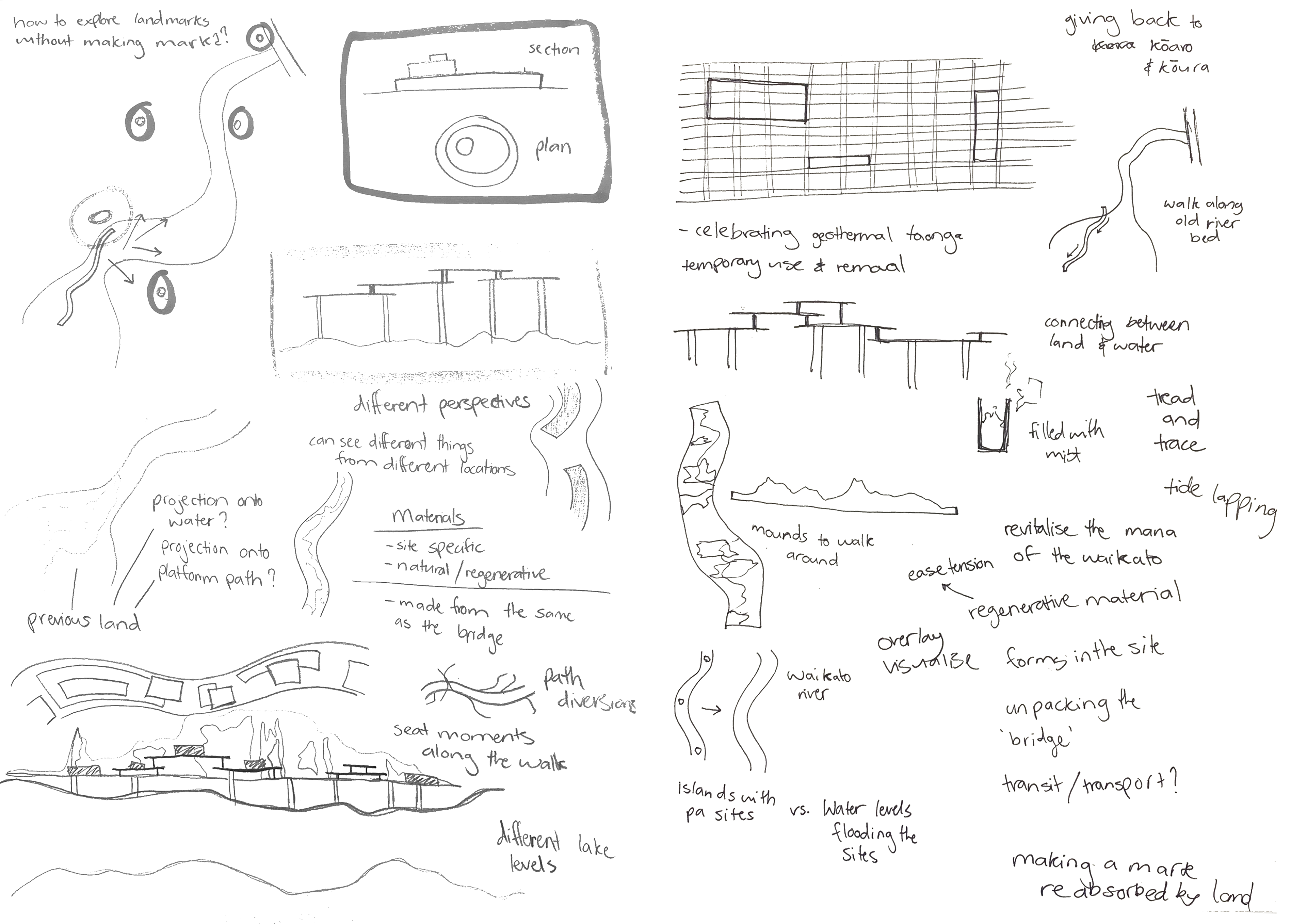
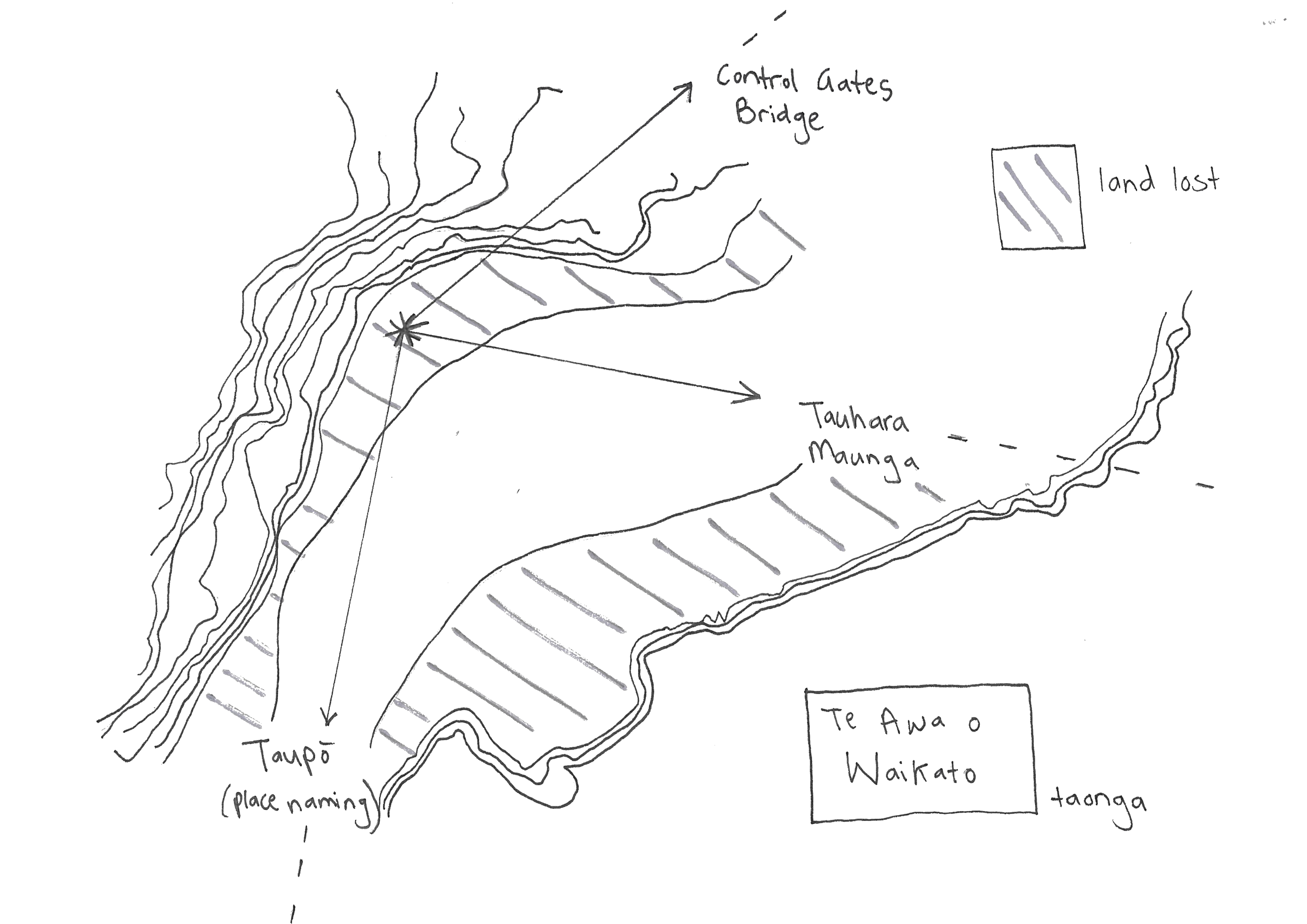
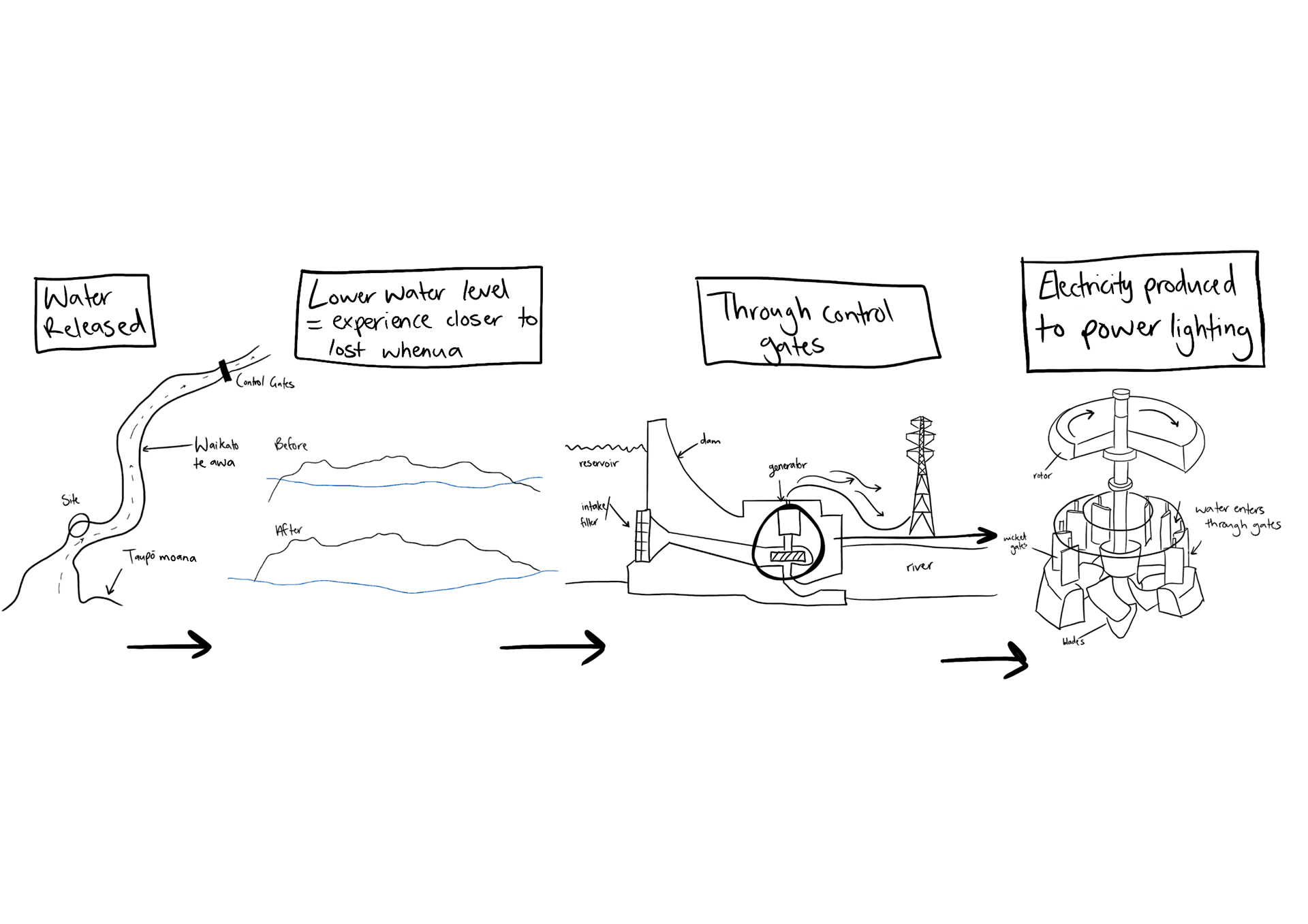
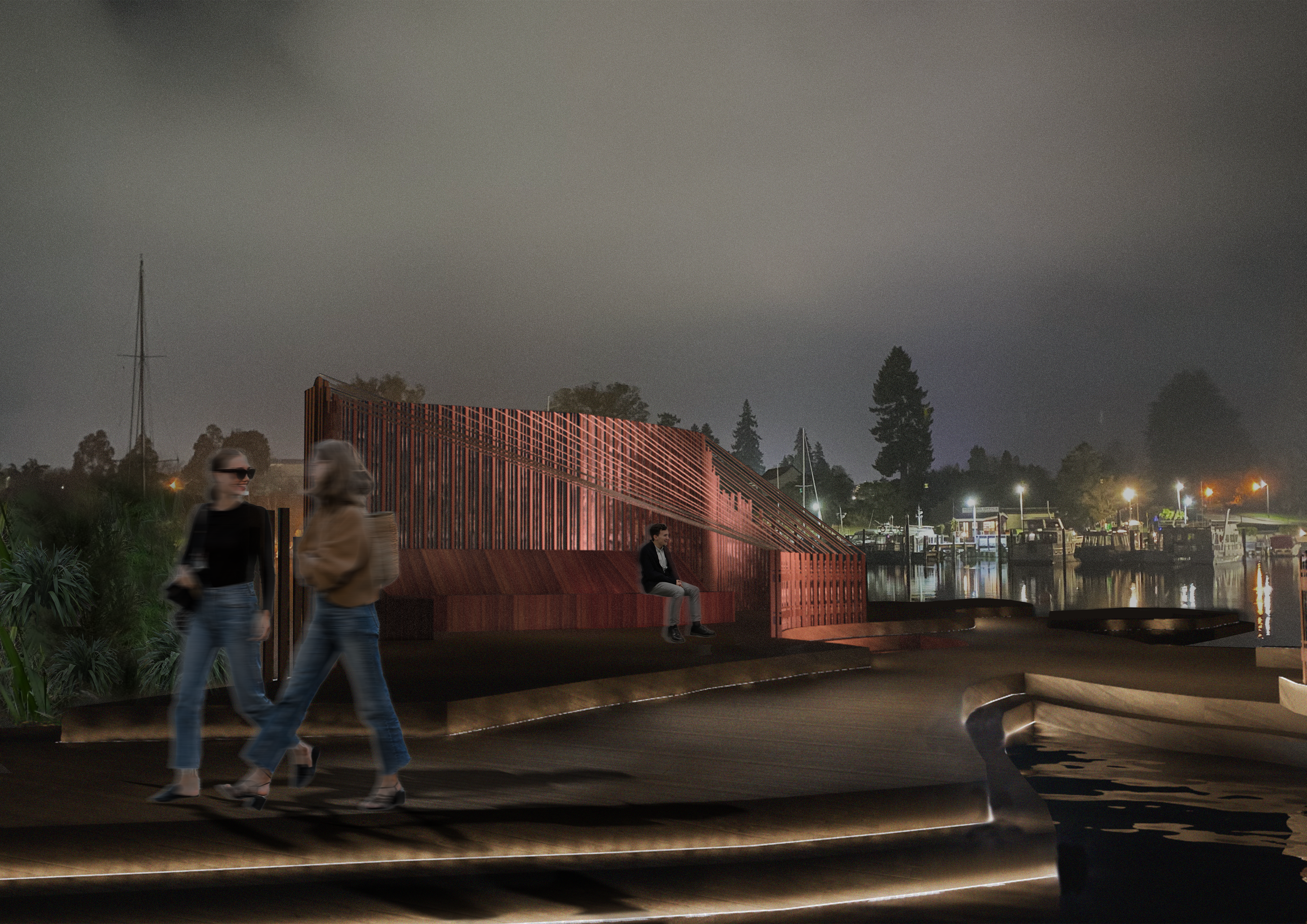
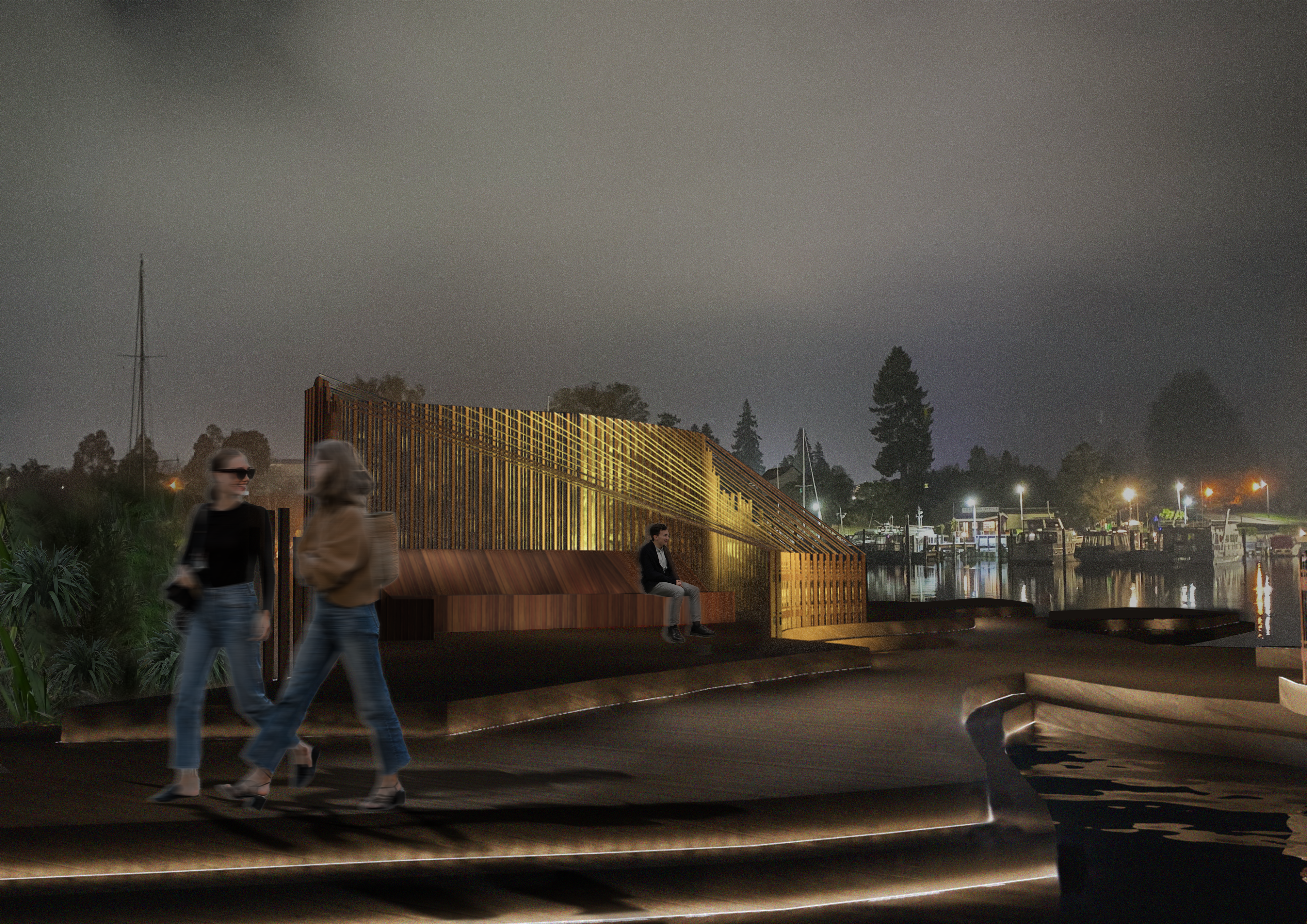
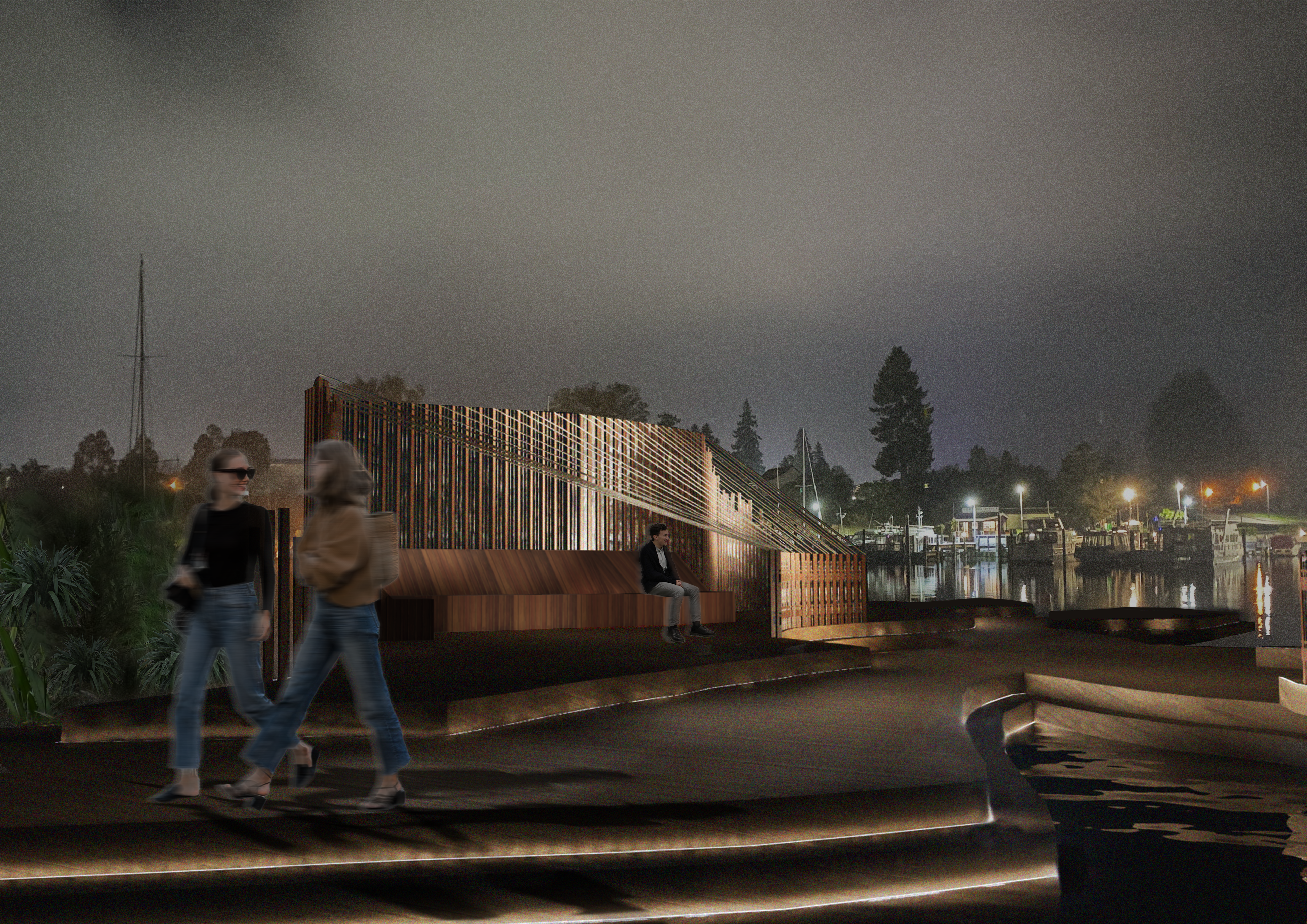
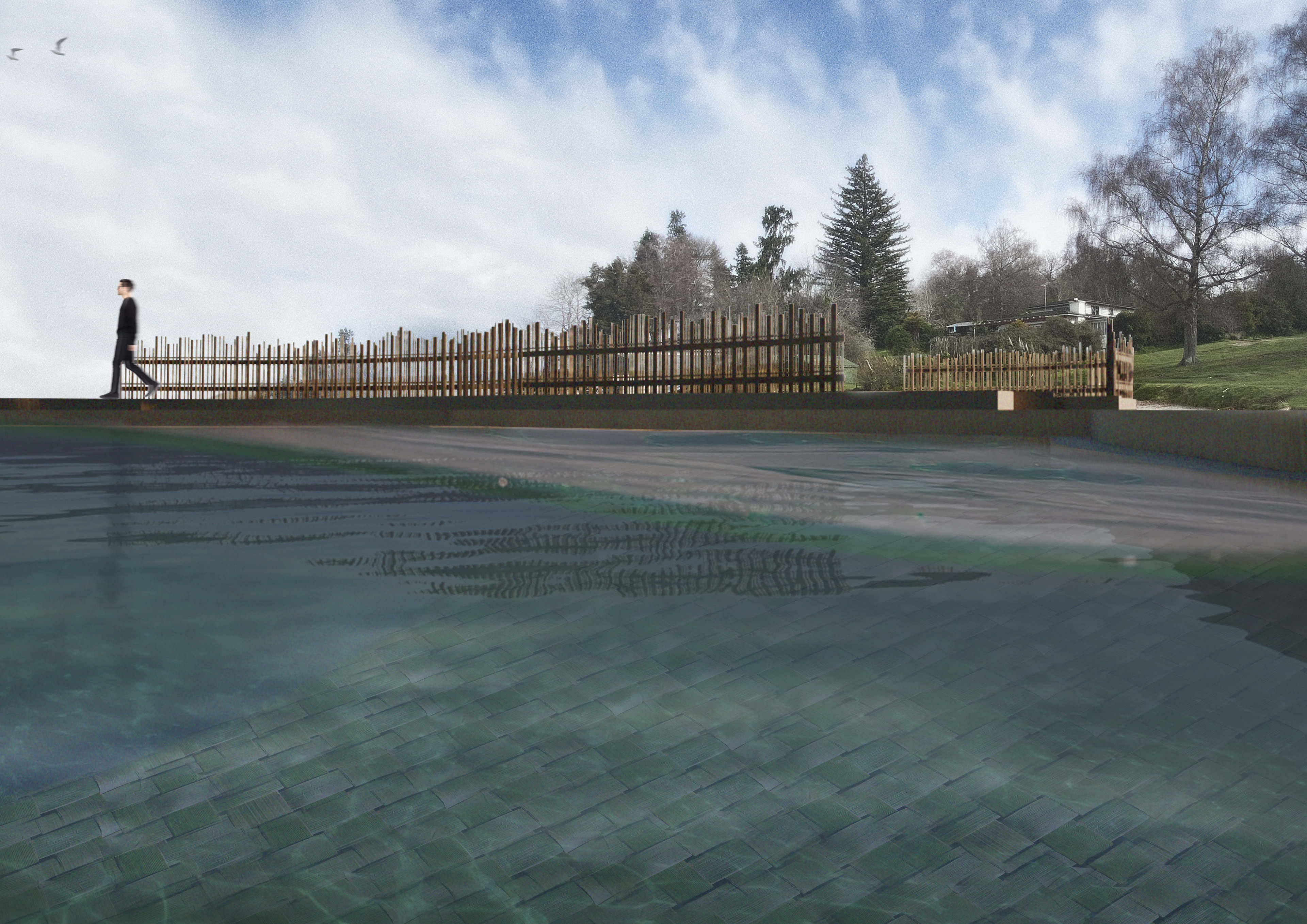
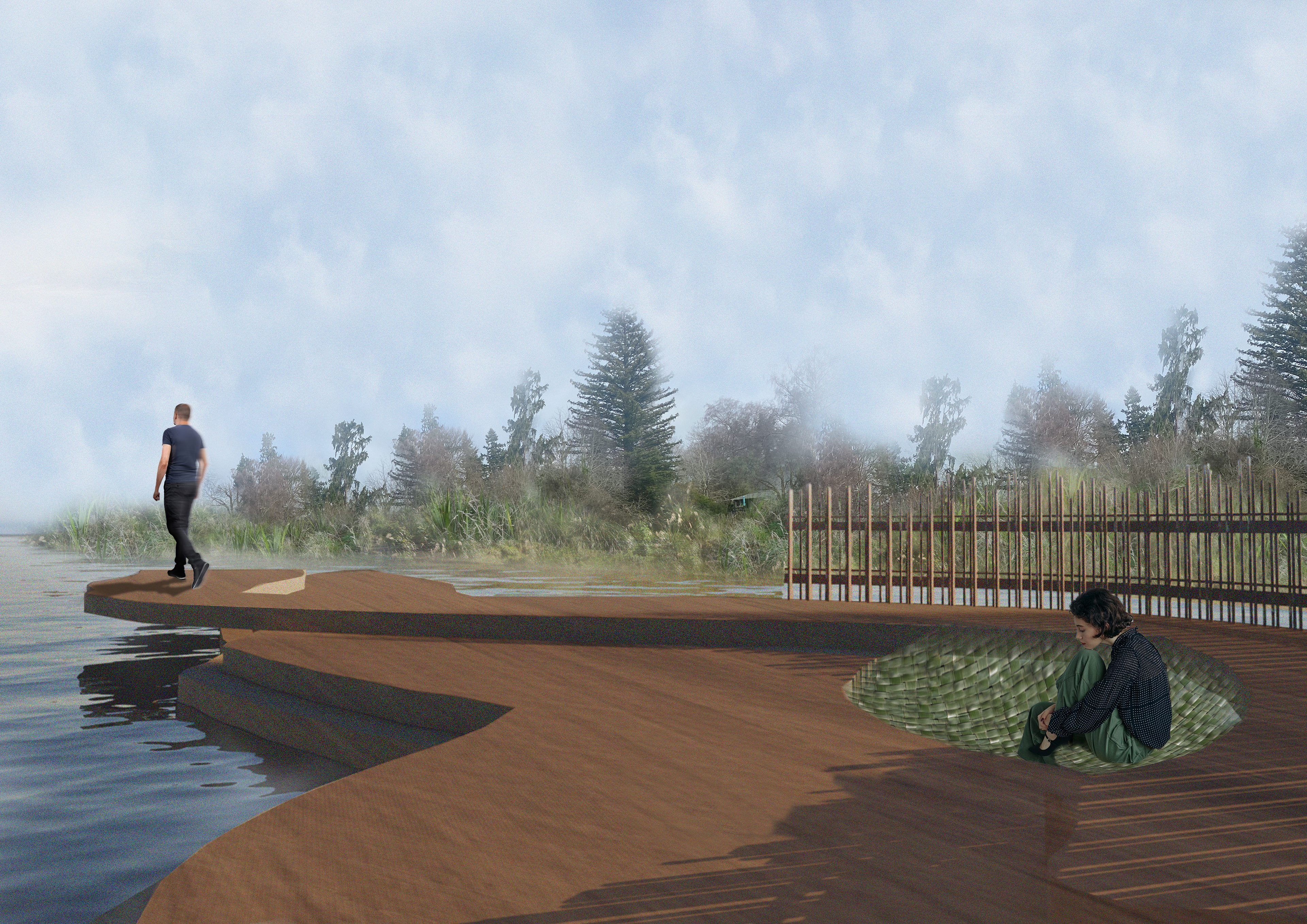
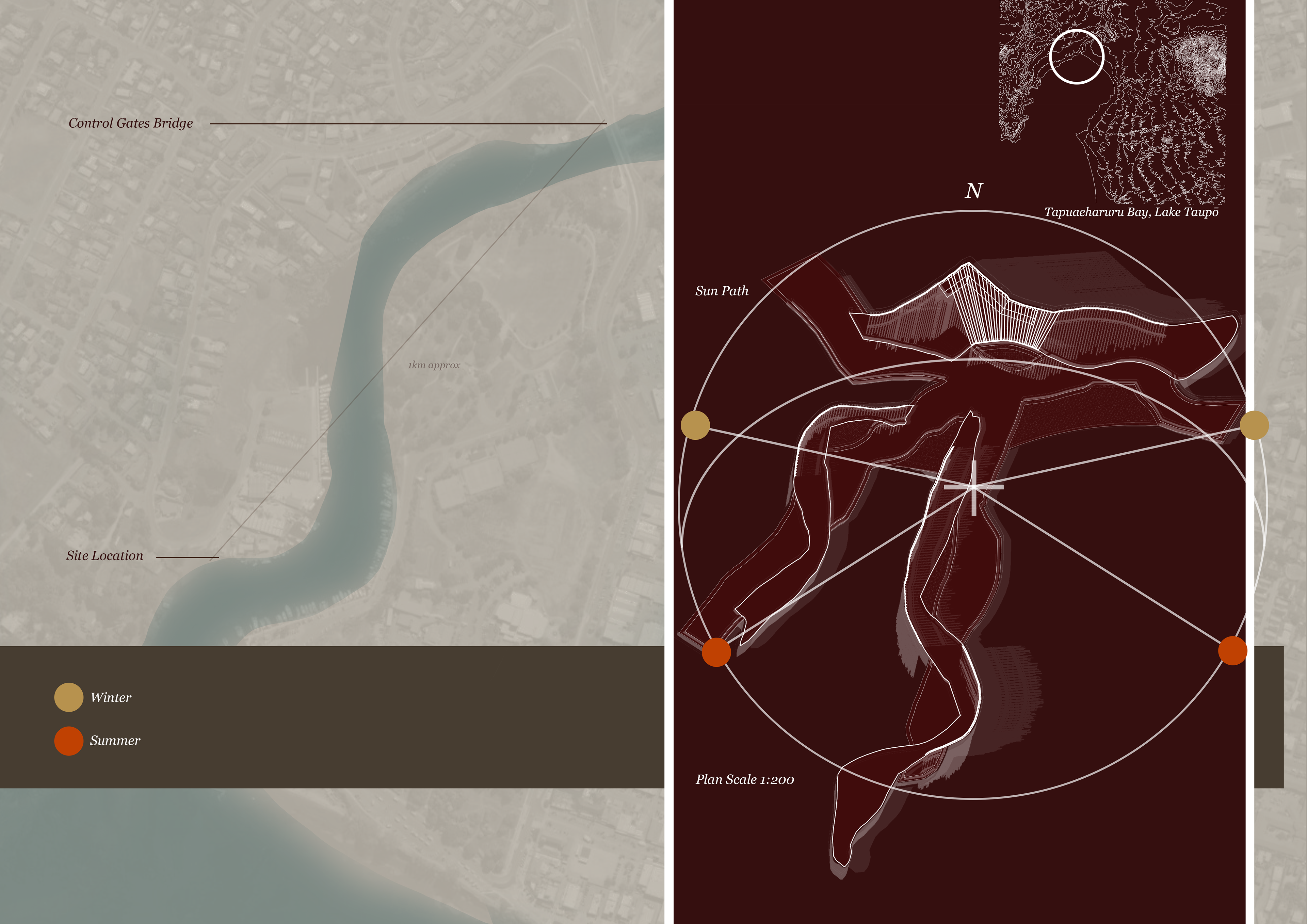
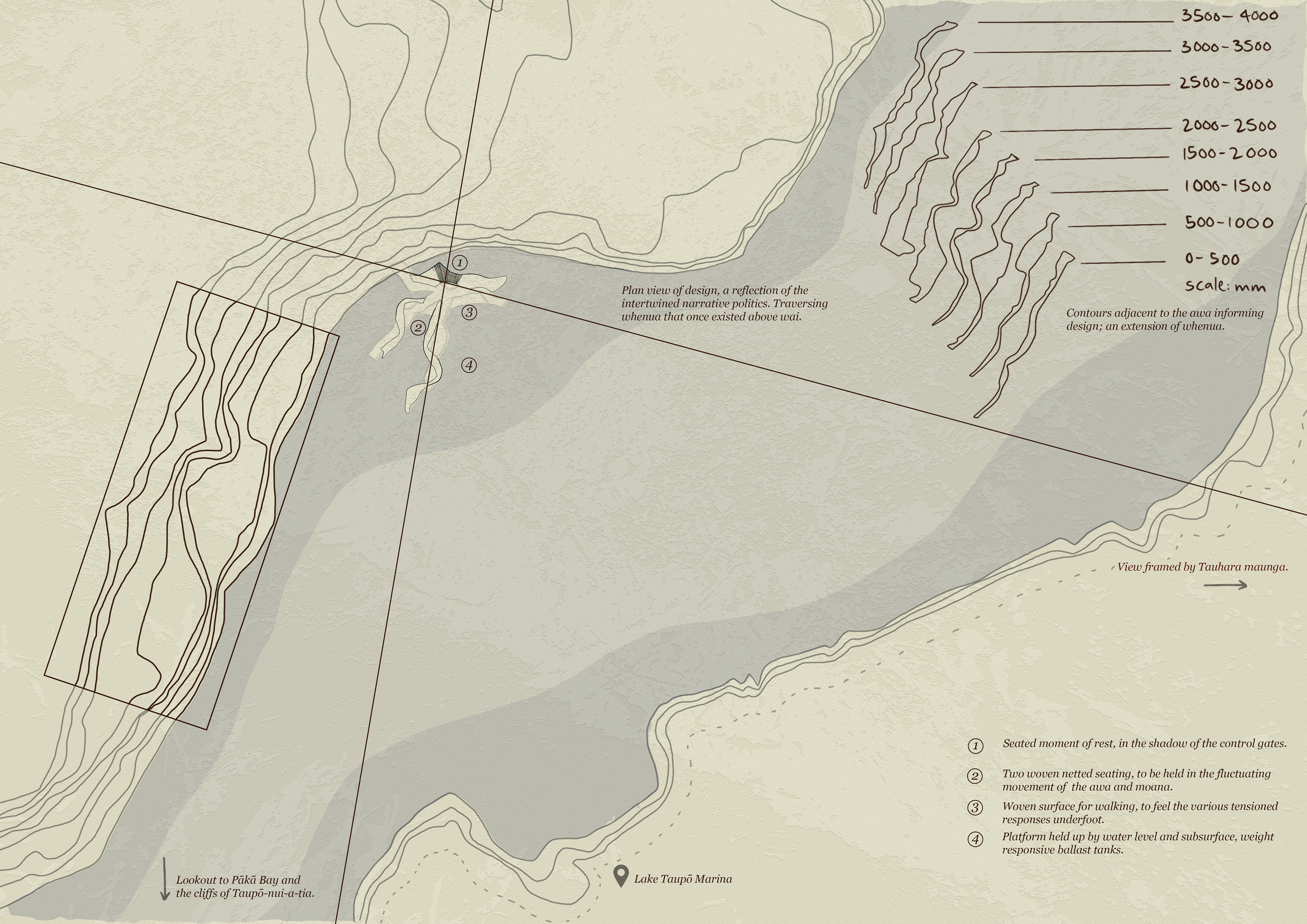
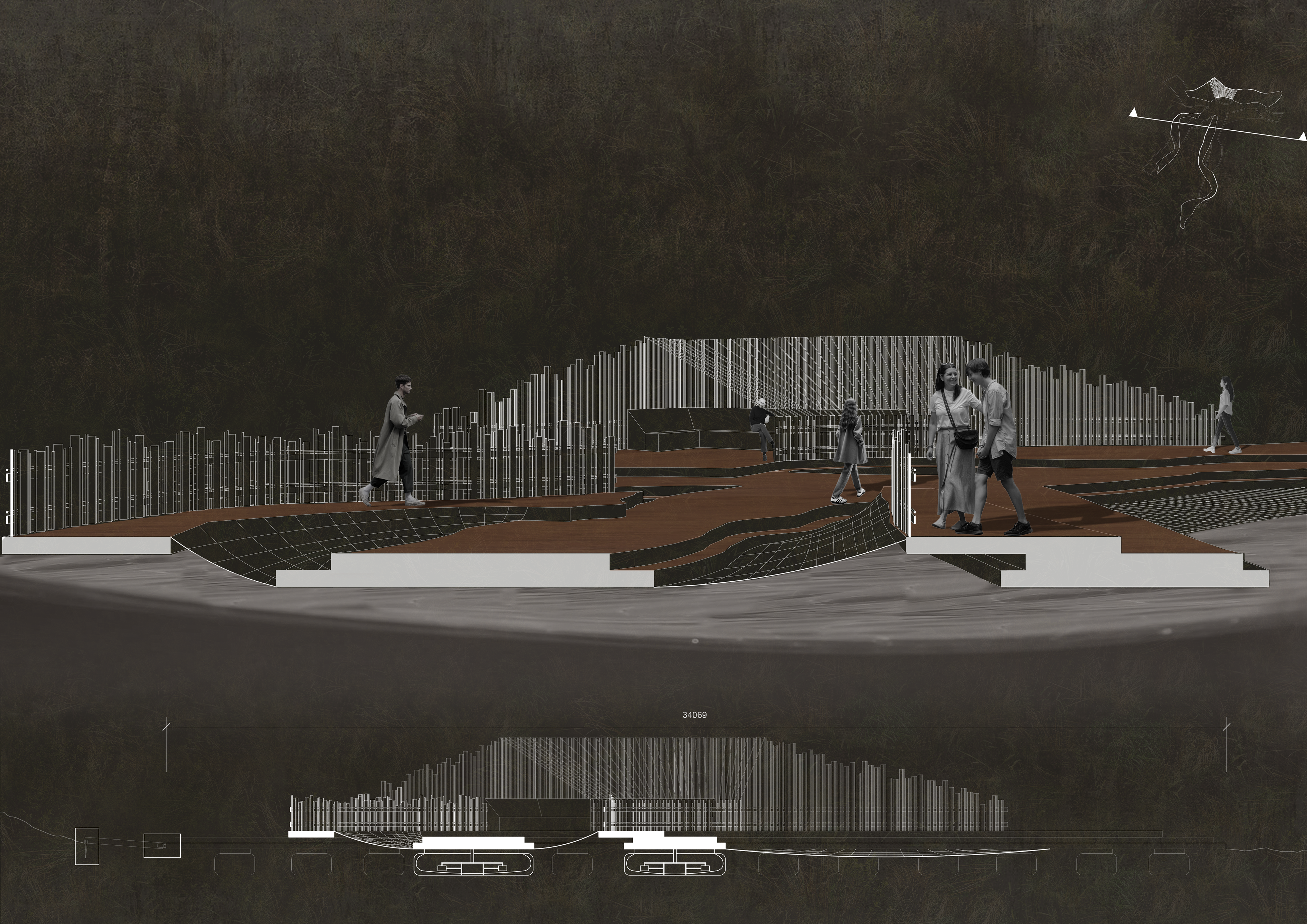
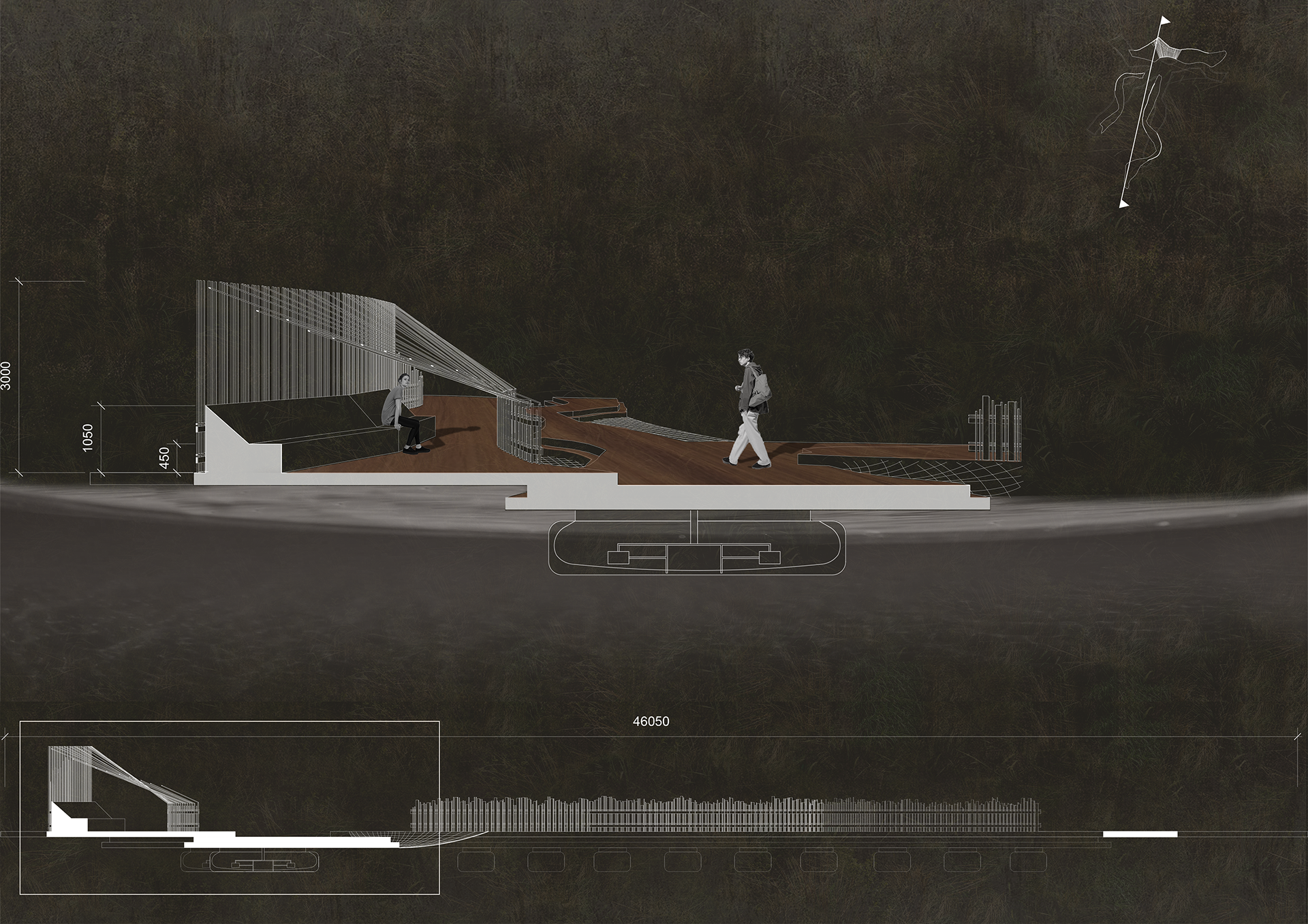
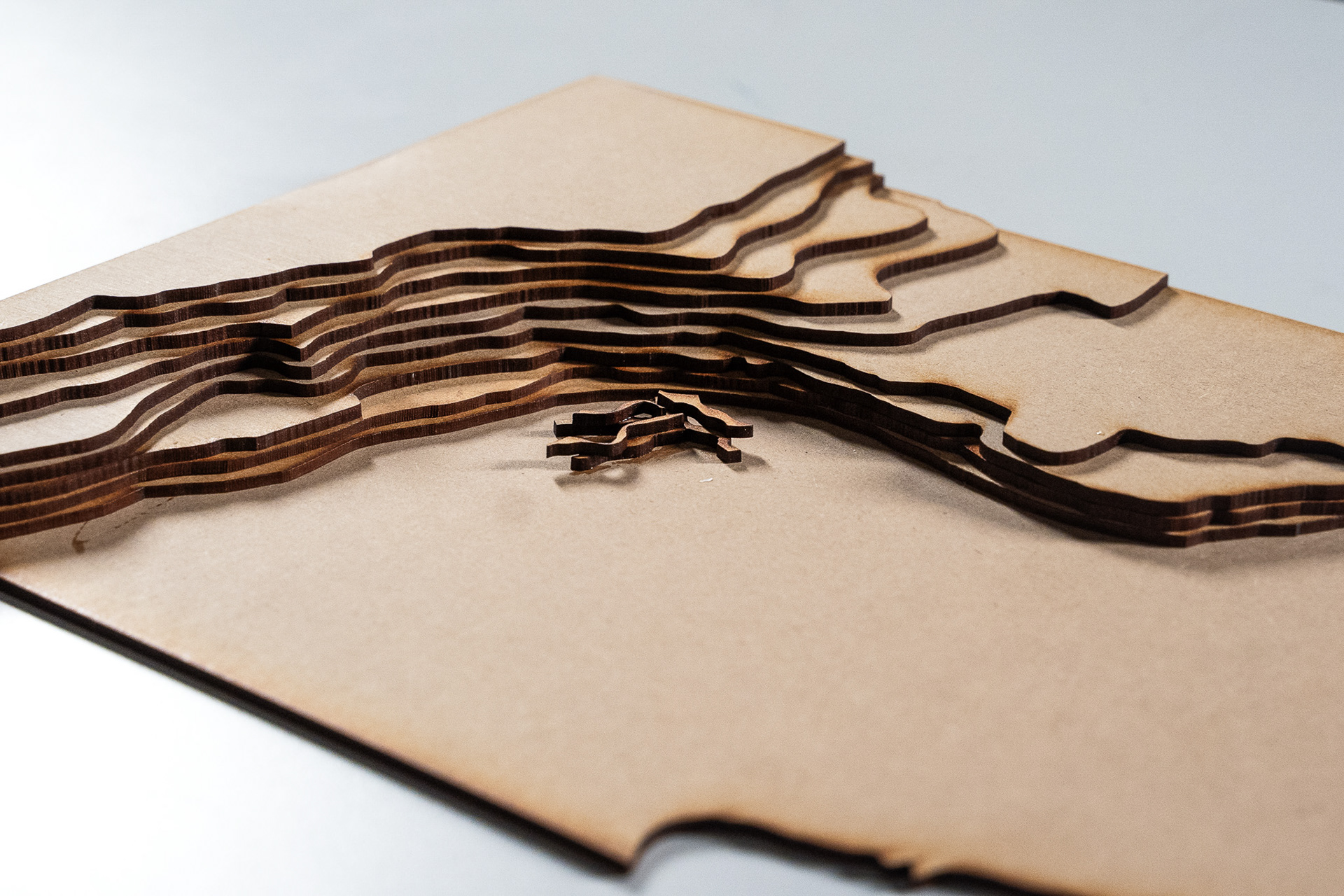
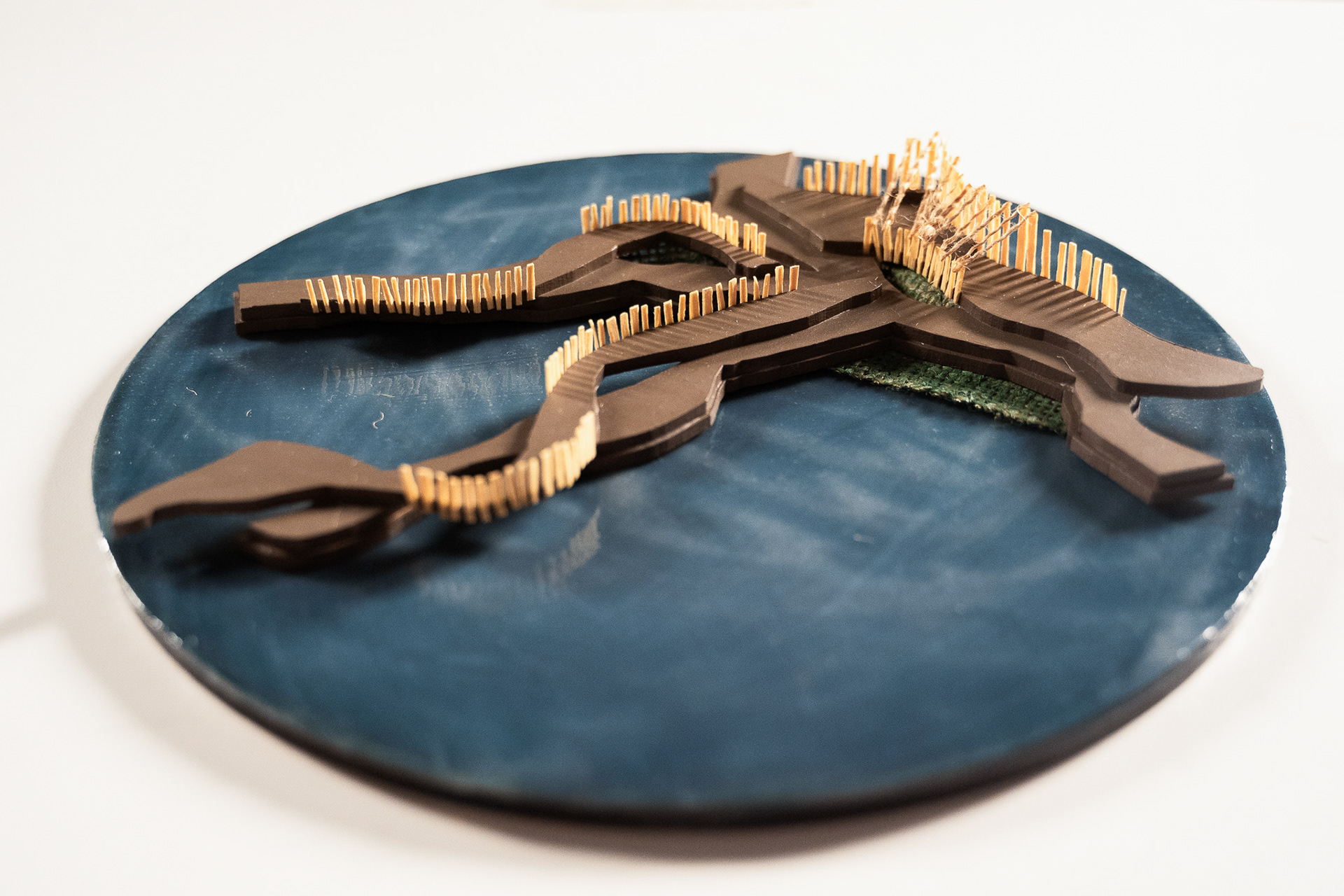
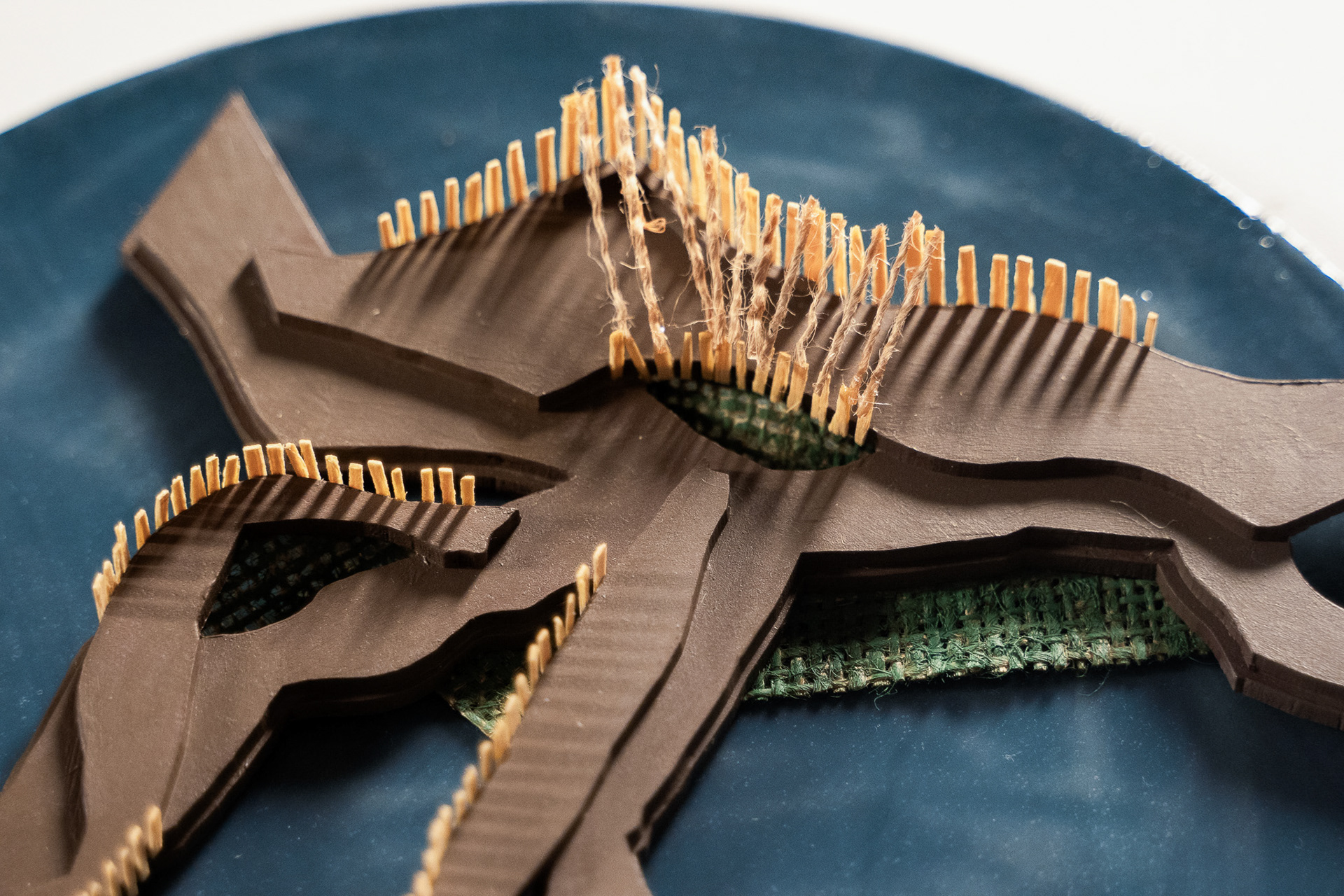
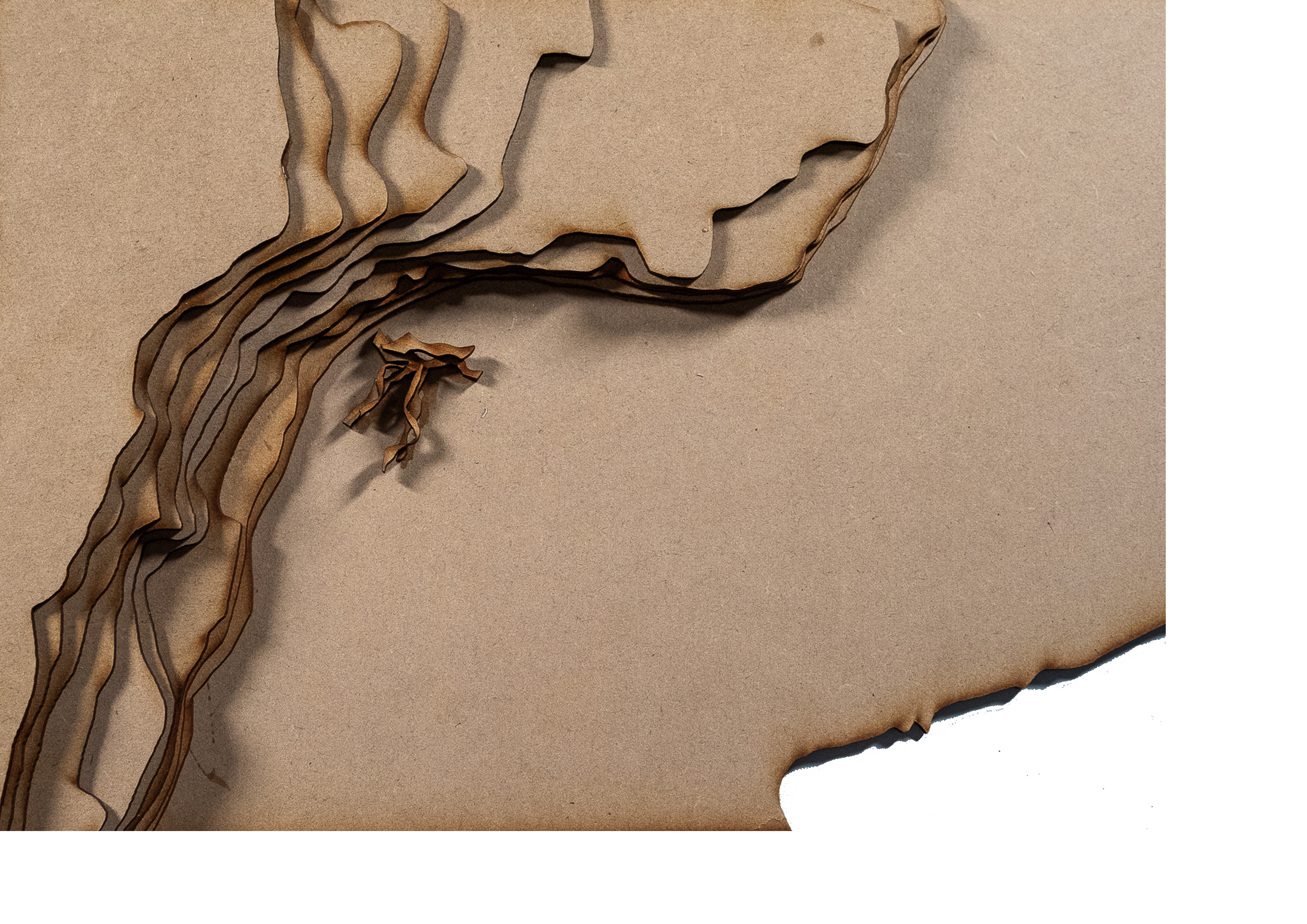
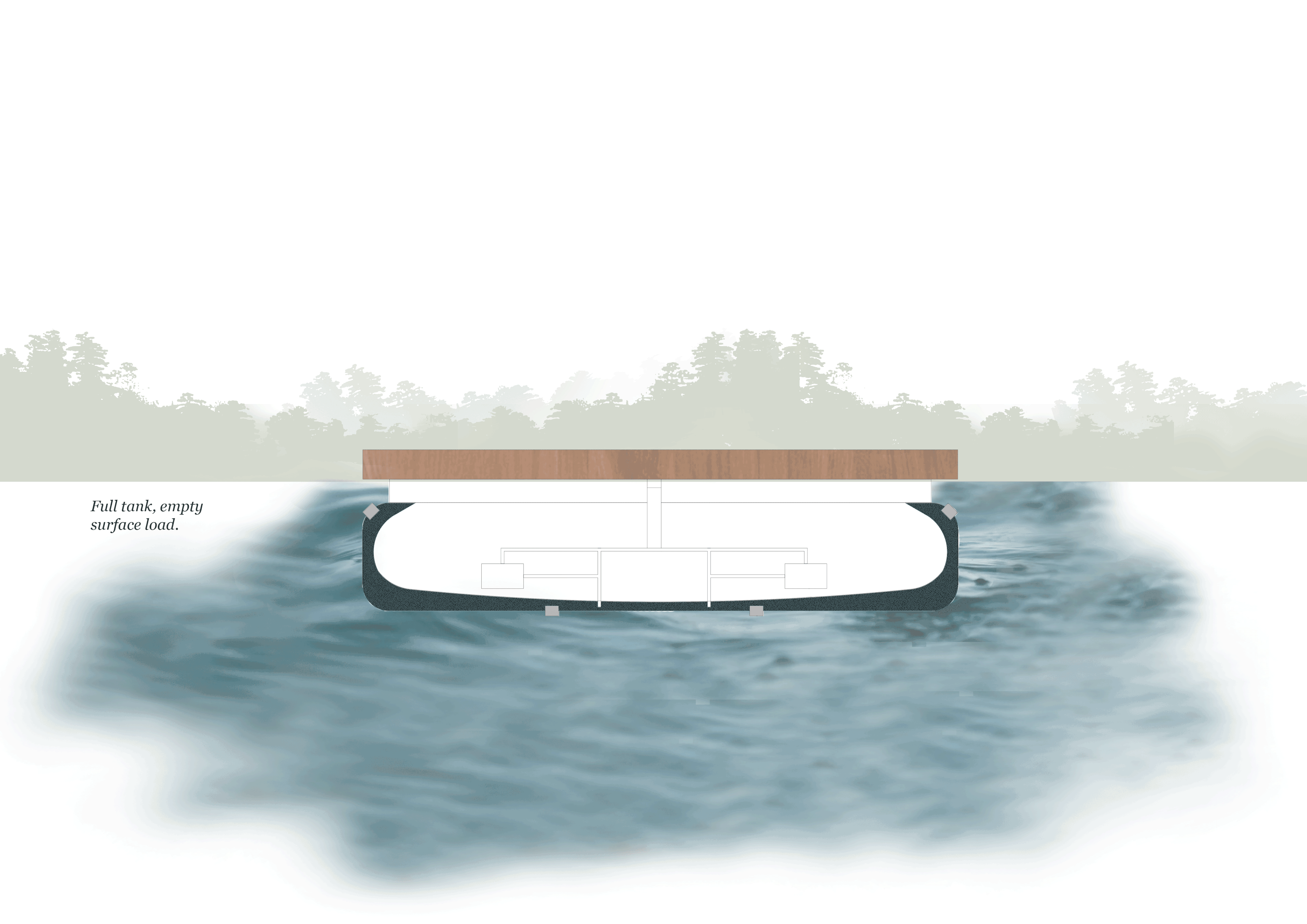
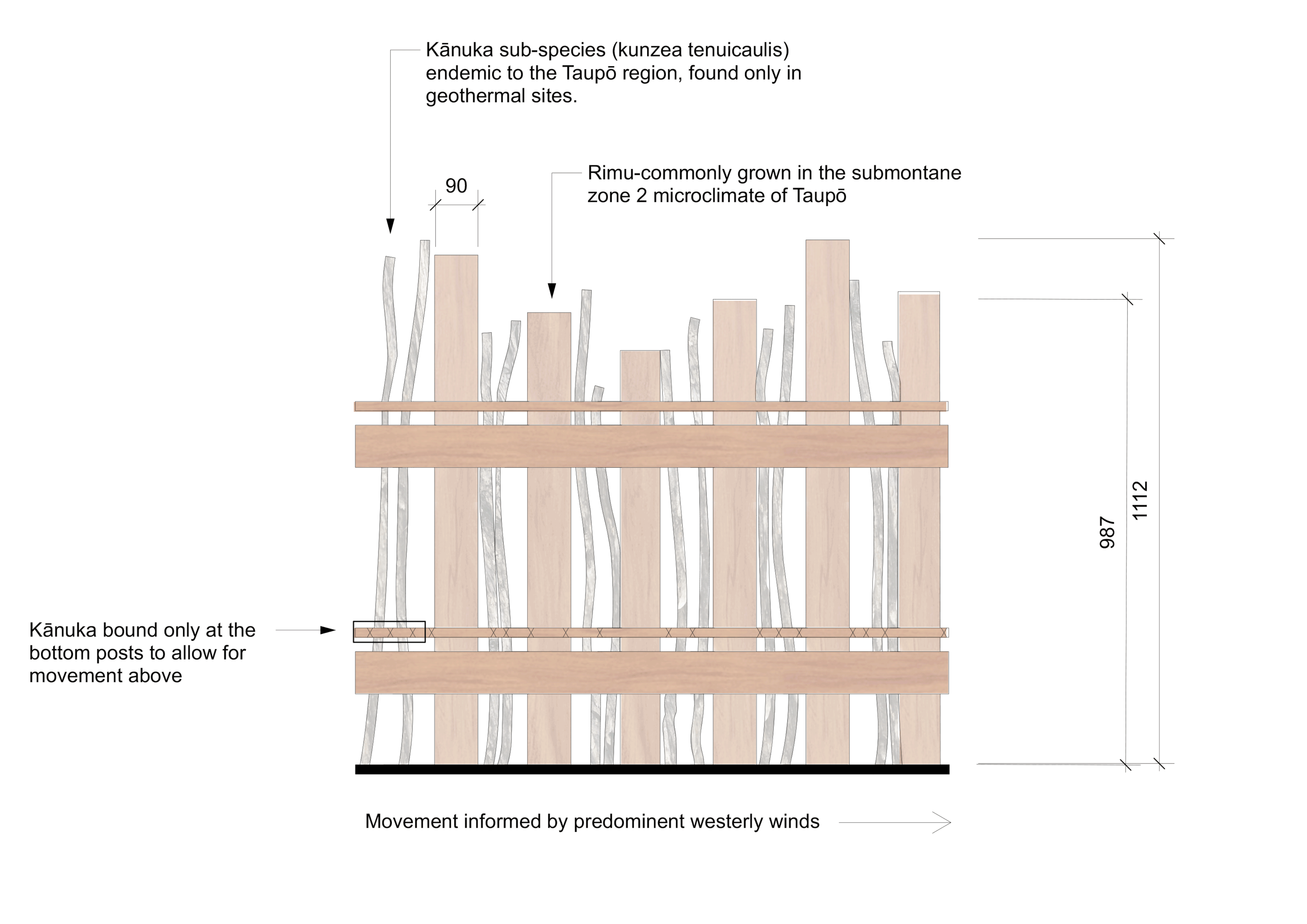
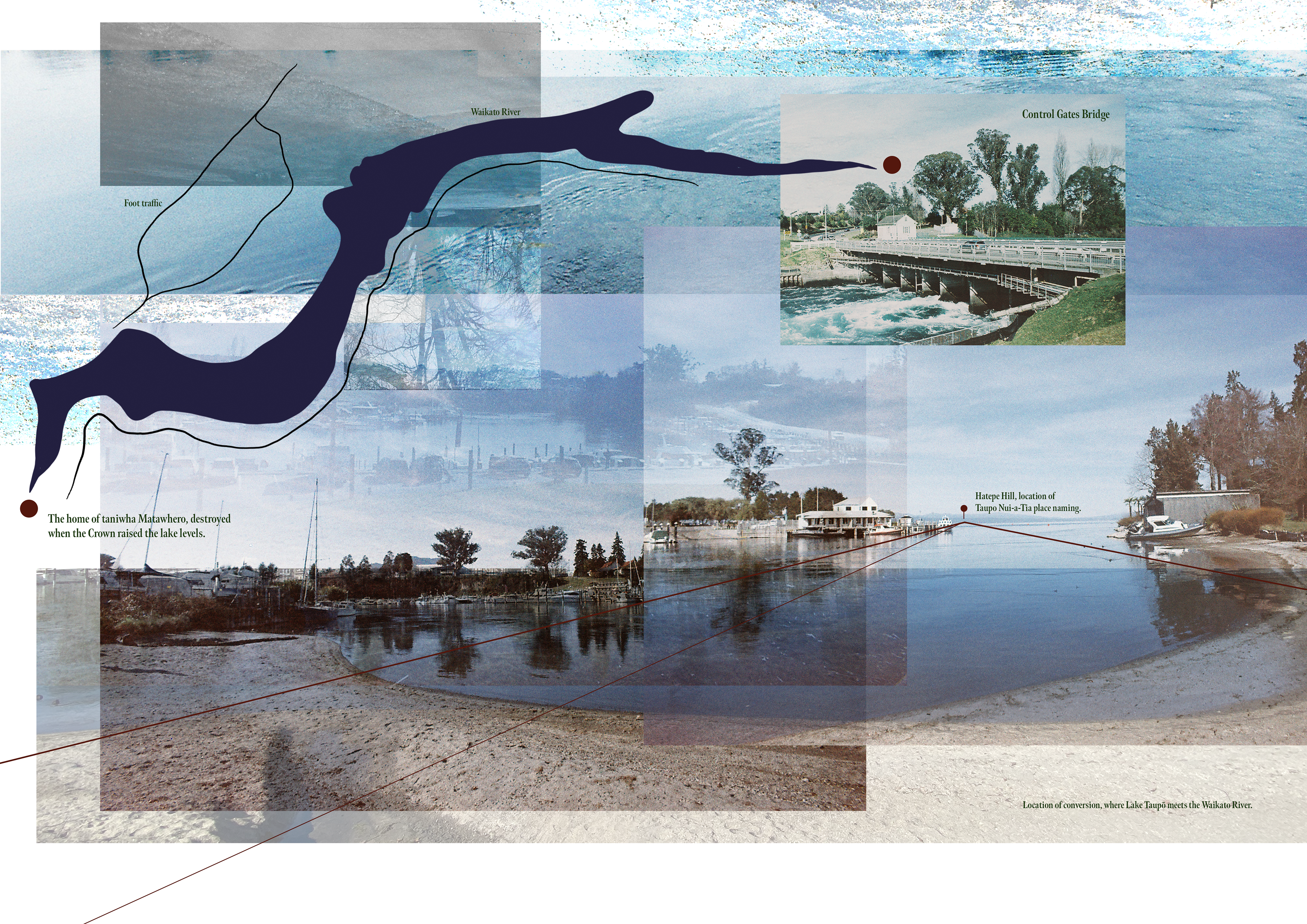
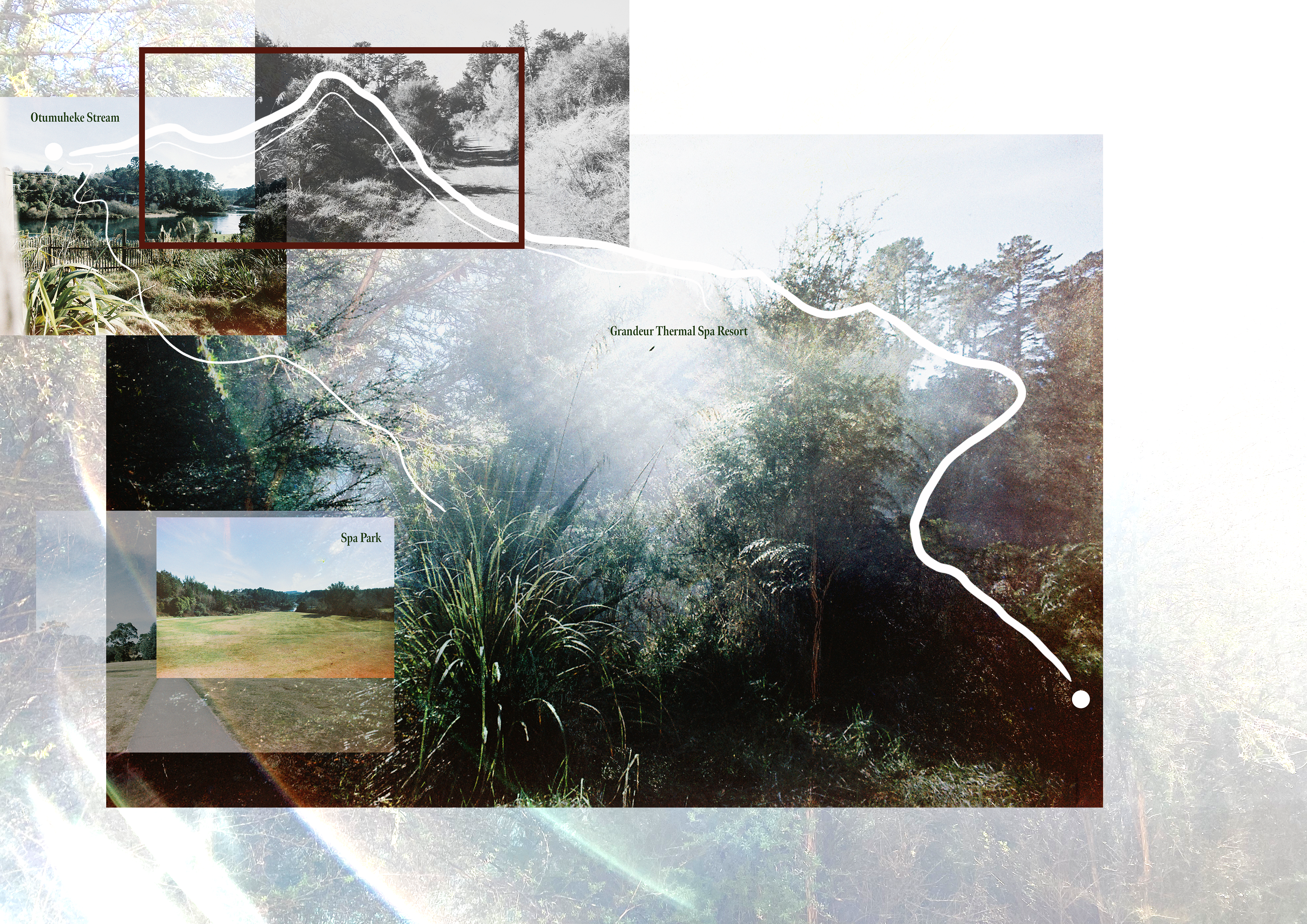
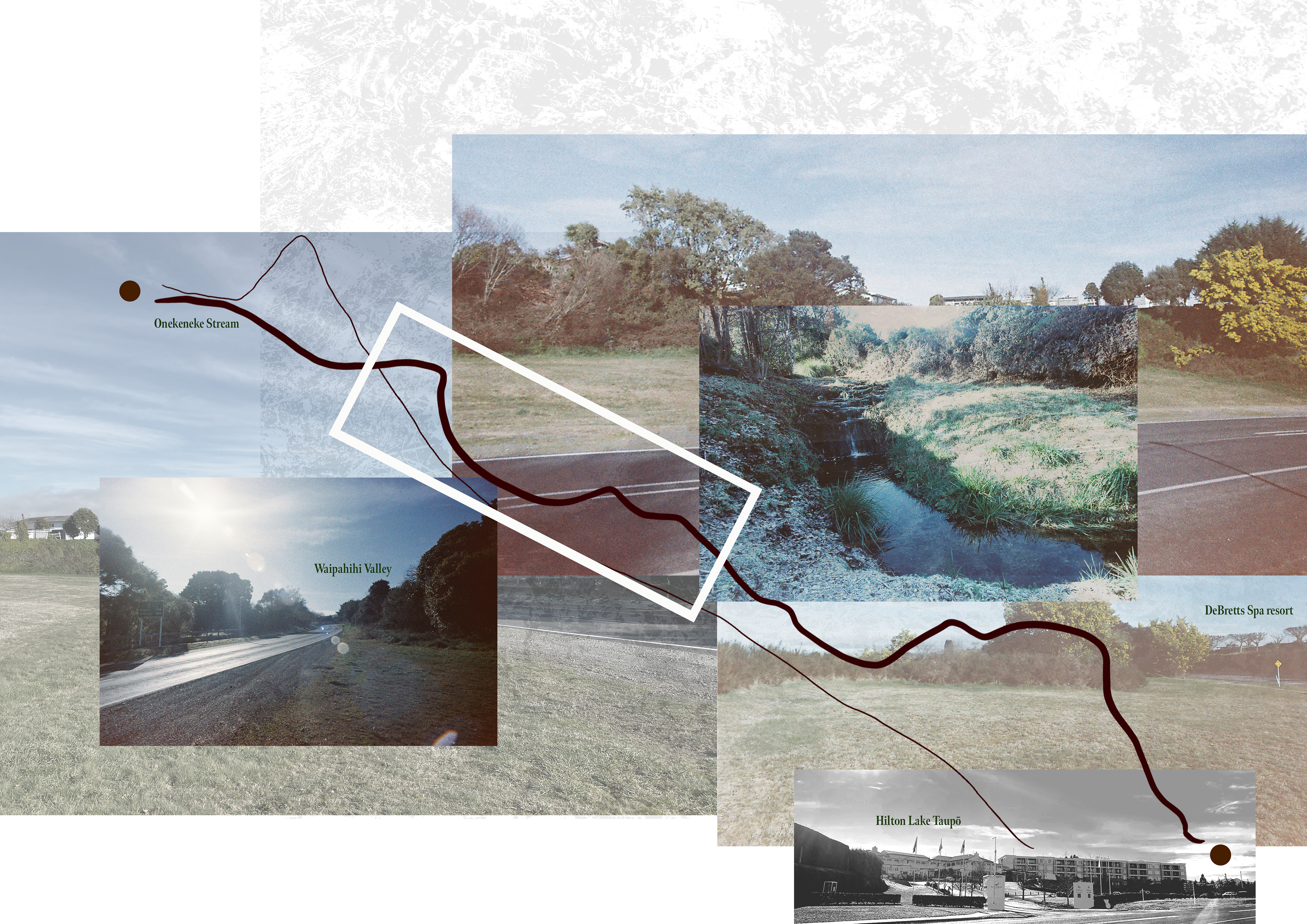
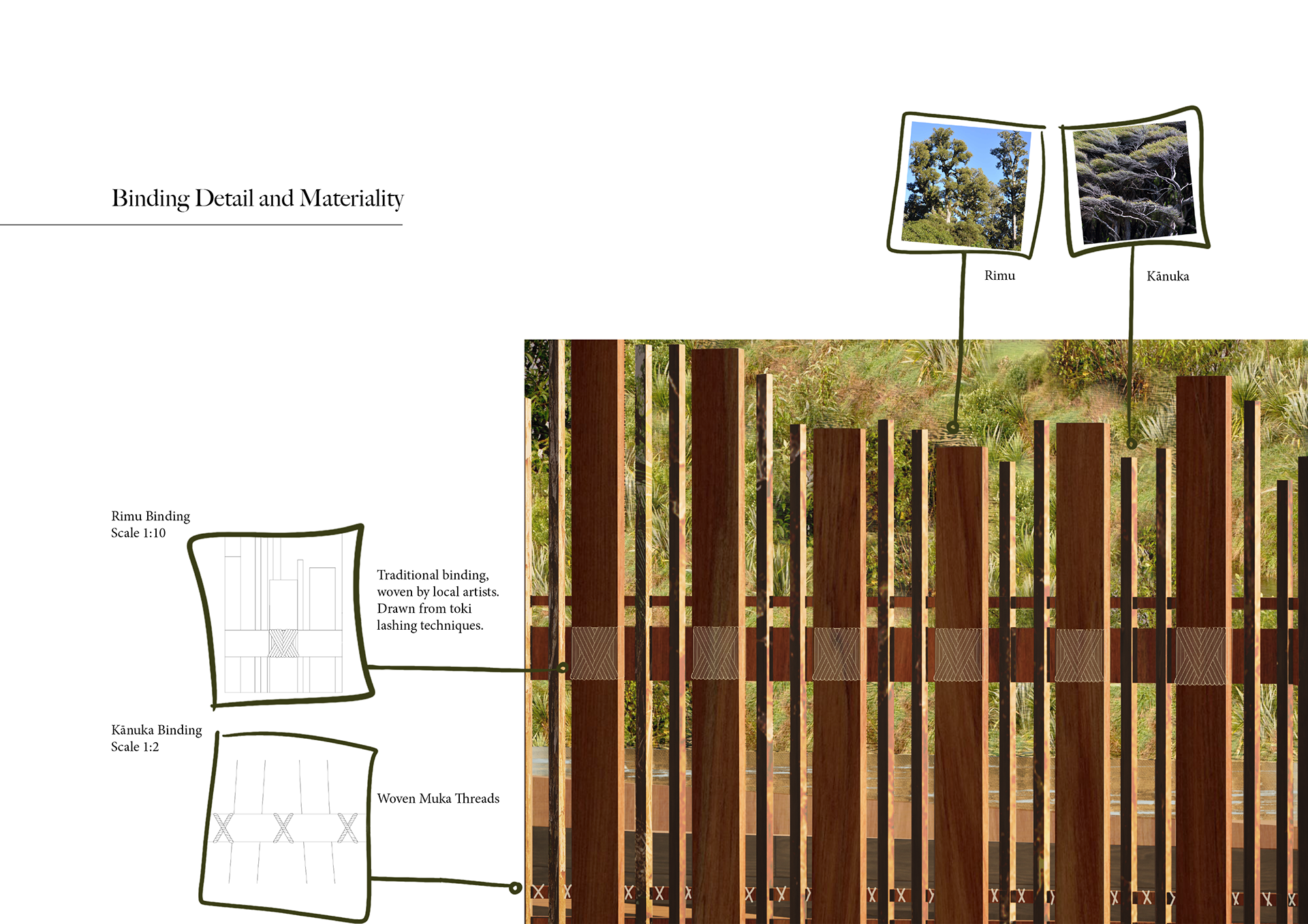
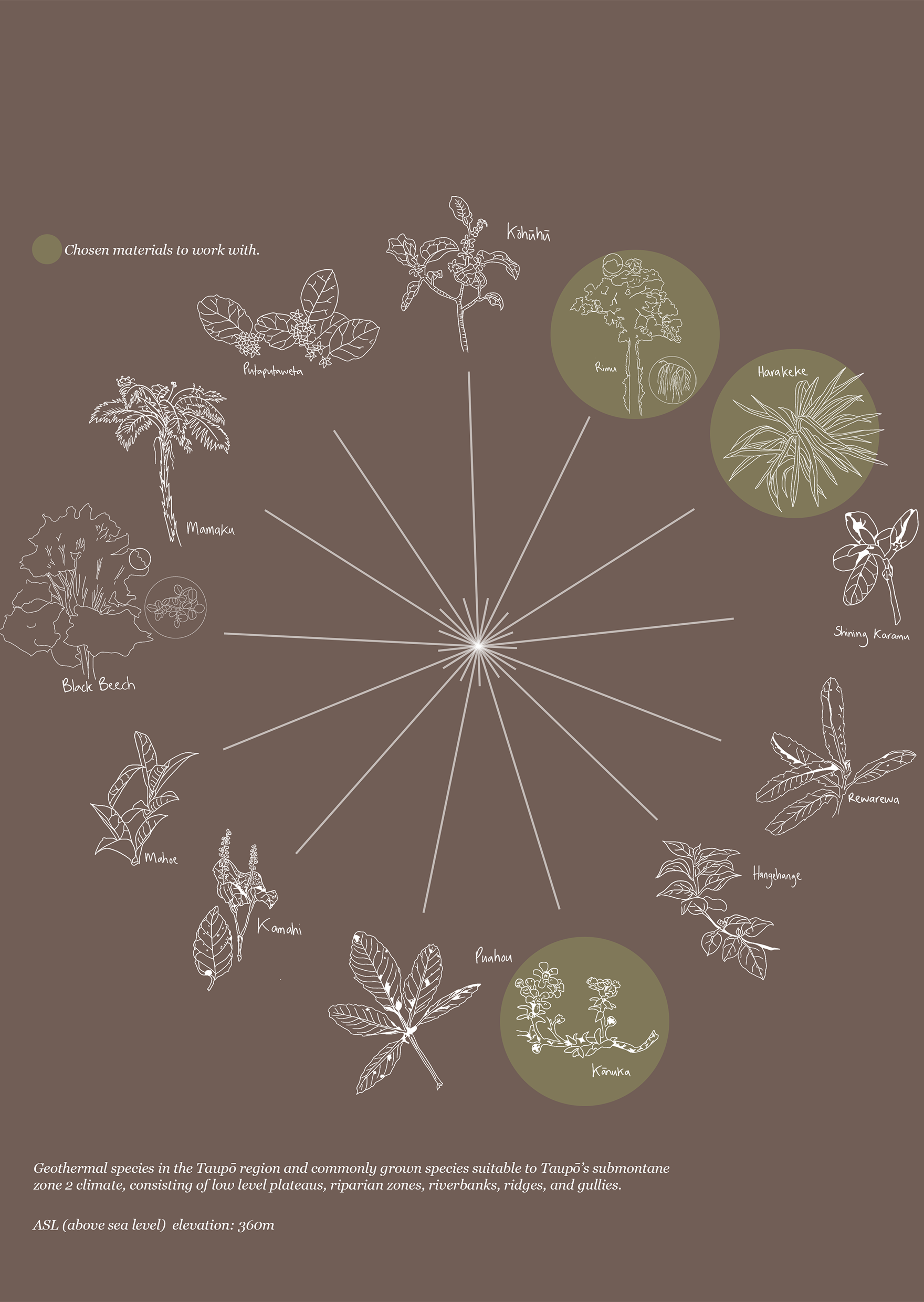
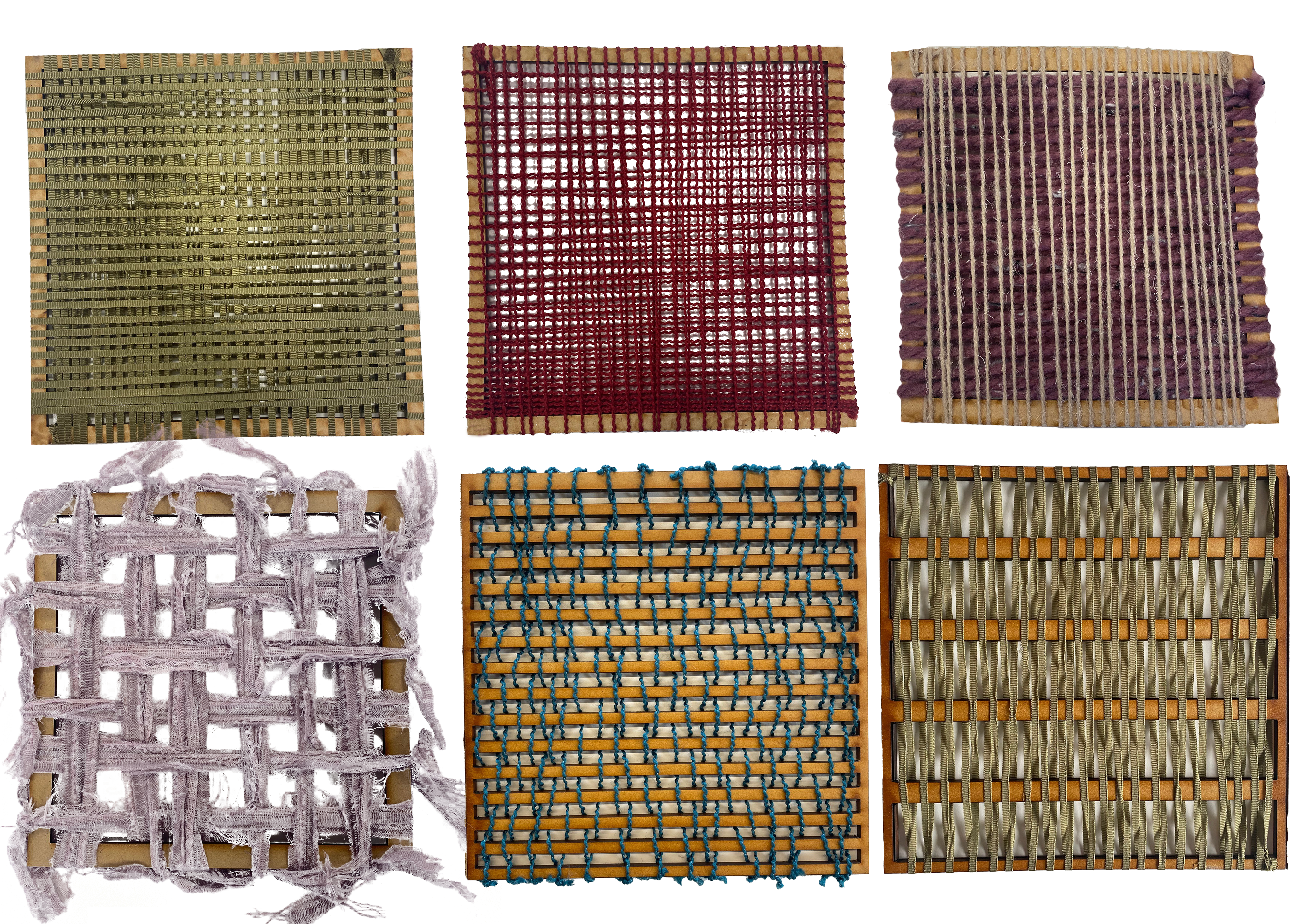
‘To Tread Unsettled Surface’ explores tensions between culturally significant whenua and colonised developments, specifically the Control Gates Bridge in Taupō, that regulates water flow in the Waikato Hydro System. This temporary installation rests on the surface of the water where Waikato Te Awa meets Taupō Moana. As the water and light change, participants experience a responsive environment, inviting a journey through intertwined narratives and encouraging a deepened connection to whenua. The design aims to be an extension of whenua allowing users to traverse land that once was, as a means of understanding. ‘To Tread Unsettled Surface’ acknowledges lost Ngāti Tūwharetoa resources and reveals the impact of water fluctuations on land. It aims to decolonize site narratives, offer alternative perspectives and redefine the settler gaze. The experience is in conversation with whenua and explores contrasting land uses between Māori and non-Māori. The design is inherently of the land and facilitates the reveal of significant features and events that frame the region though an offering of spatial gestures.



























